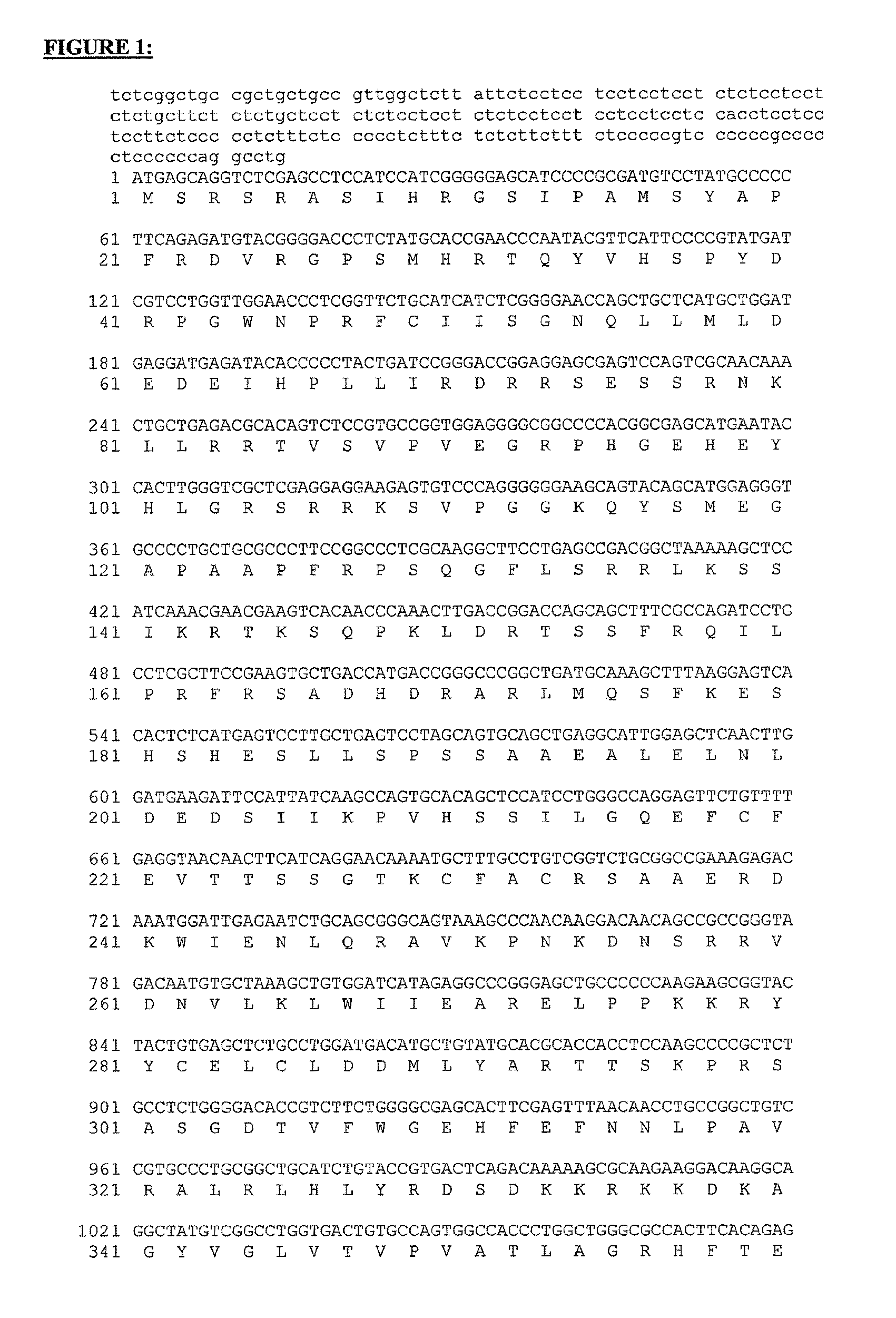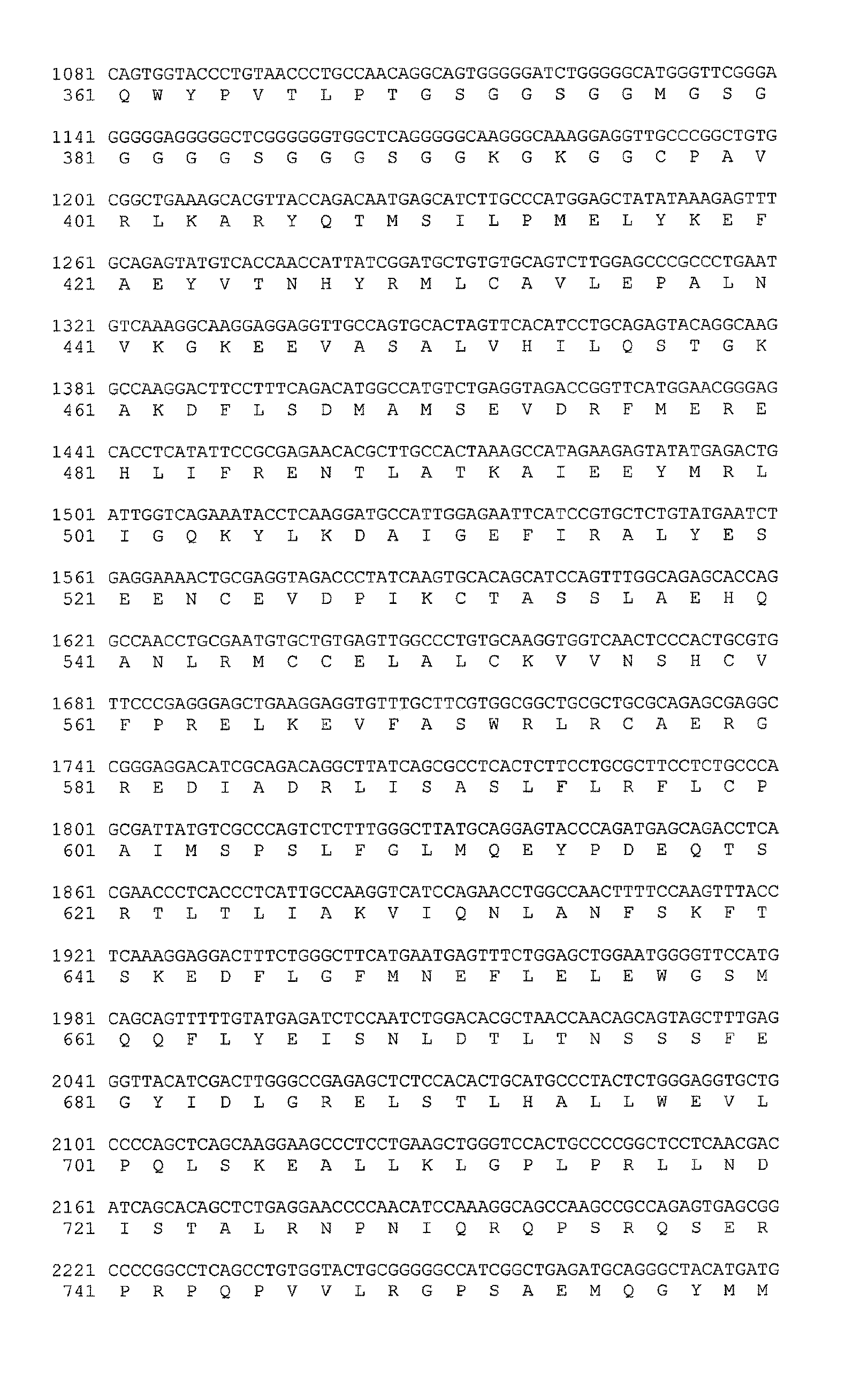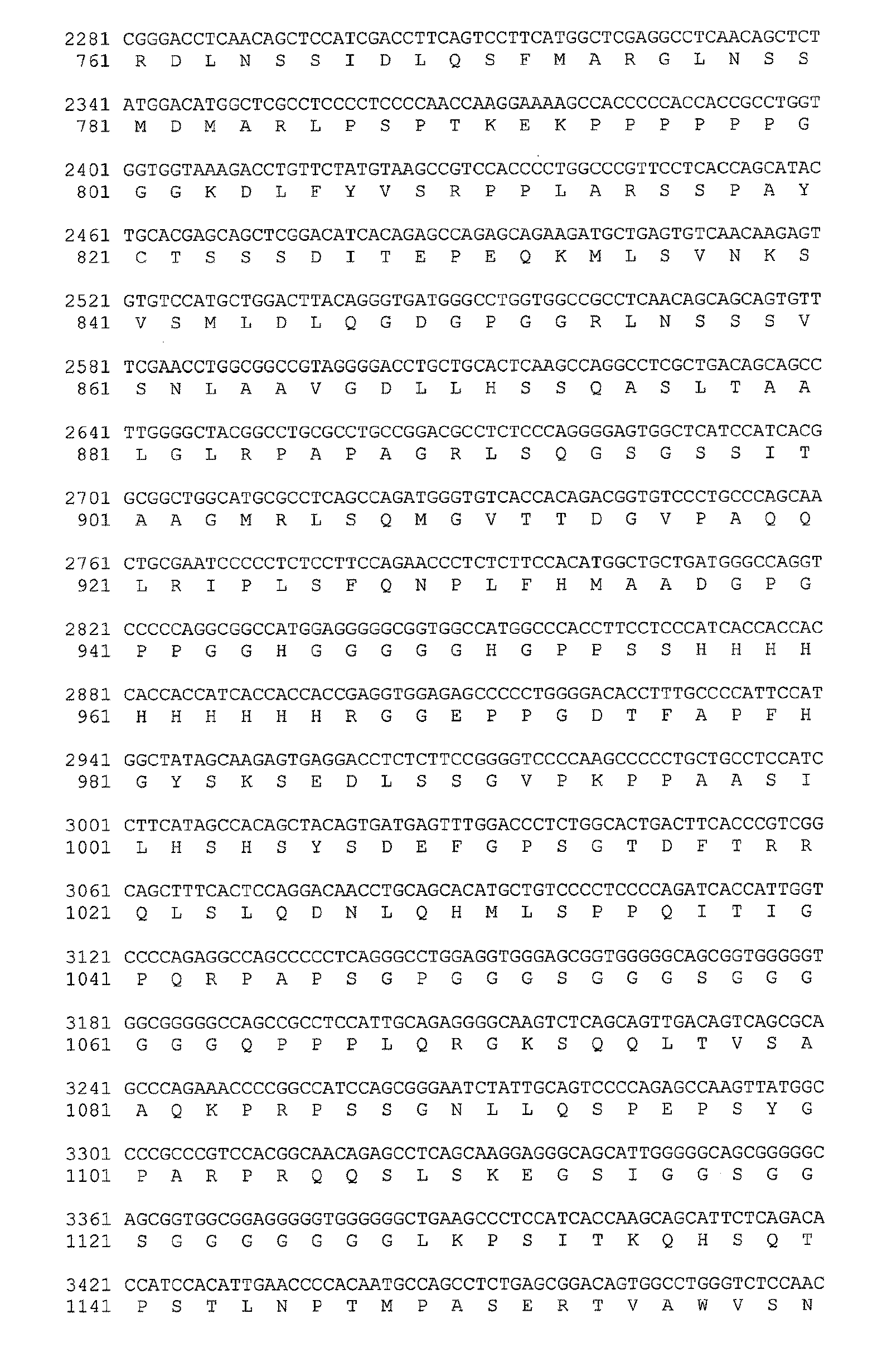Syngap1 dysfunctions and uses thereof in diagnostic and therapeutic applications for mental retardation
a technology of syngap1 and dysfunction, applied in the field of genetic diseases, can solve the problems of not yet identified autosomal dominant nsmr genes, and achieve the effect of diagnosing mental retardation
- Summary
- Abstract
- Description
- Claims
- Application Information
AI Technical Summary
Benefits of technology
Problems solved by technology
Method used
Image
Examples
example
Example 1
De Novo Mutations in SYNGAP1, a Component of the NMDA Receptor Complex Cause Autosomal Non-Syndromic Mental Retardation
Summary
[0124]Non-syndromic mental retardation (NSMR) represents one of the most important unsolved problems in medicine. Although autosomal forms of NSMR account for the majority of cases, the genes involved remain largely unknown. The autosomal gene SYNGAP1, which codes for a RAS GTPase-activating protein that is critical for cognition and synapse function, was sequenced in 94 patients with NSMR and de novo truncating mutations (K138X, R579X, L813RfsX22) were identified in three of them. In contrast, no SYNGAP1 de novo or truncating mutations were found in controls (n=190). SYNGAP1 is the first example of an autosomal dominant NSMR gene.
Methods
[0125]Patients. A cohort of 94 sporadic cases of NSMR (45 males, 49 females) was recruited for this study. All patients were examined by at least one experienced clinical geneticist who ruled out the presence of spec...
PUM
| Property | Measurement | Unit |
|---|---|---|
| Length | aaaaa | aaaaa |
| Time | aaaaa | aaaaa |
| Time | aaaaa | aaaaa |
Abstract
Description
Claims
Application Information
 Login to View More
Login to View More - R&D
- Intellectual Property
- Life Sciences
- Materials
- Tech Scout
- Unparalleled Data Quality
- Higher Quality Content
- 60% Fewer Hallucinations
Browse by: Latest US Patents, China's latest patents, Technical Efficacy Thesaurus, Application Domain, Technology Topic, Popular Technical Reports.
© 2025 PatSnap. All rights reserved.Legal|Privacy policy|Modern Slavery Act Transparency Statement|Sitemap|About US| Contact US: help@patsnap.com



